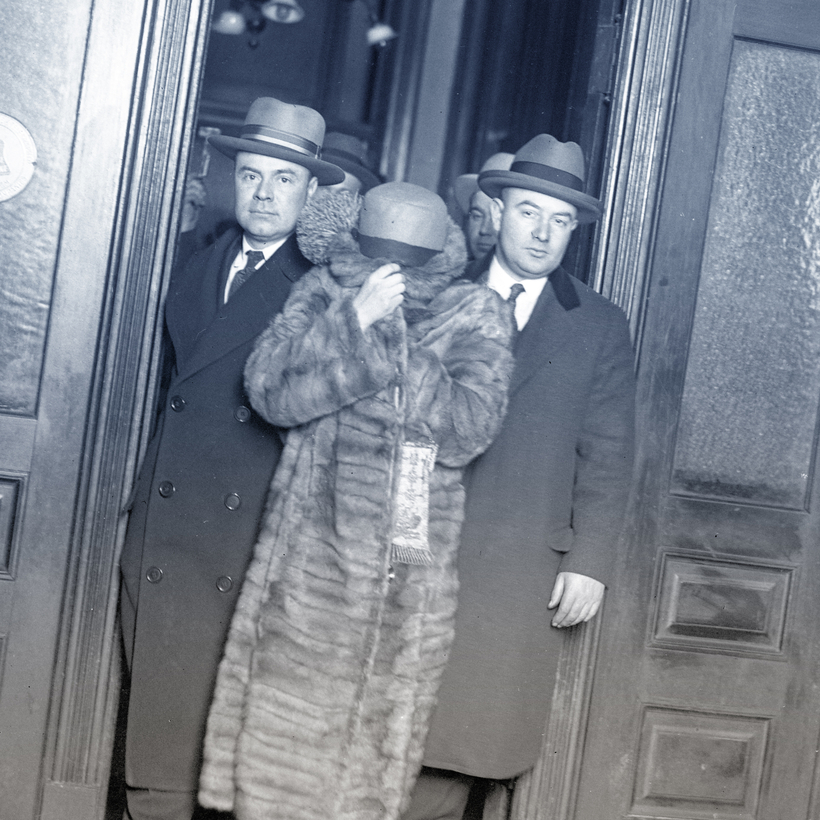When Richard Whittemore and Margaret Messler married in a Baltimore church, in October 1921, they were five years away from being the most famous couple in America. For a time, they were tabloid fodder for their criminal exploits and their apparent, all-consuming love. Dick, 20, was already a small-time crook with an affinity for gambling, his appetites eventually expanding to robbery and murder. Margaret, two years younger, loved her man and stood by him, proclaiming his innocence when the entire country knew (and not-so-secretly thrilled at) his guilt. They were the Tiger Girl and the Candy Kid, and the grizzled reporters and sob sisters who gave them those monikers chronicled their every turn for a public eager to gobble up the drama.
In his entertaining, zippy chronicle of the Whittemores’ lives and crimes, Glenn Stout argues that their story “is the torrid romance of an entire era”—that of the Jazz Age, “a time when everything was changing so fast and revealing so many obvious contradictions and inequalities that what made sense yesterday did not make sense today and no one quite knew what tomorrow might bring.” The argument isn’t quite definitive, but making the Whittemores avatars for several seasons of massive change, and an example of early tabloid true-crime coverage, is a compelling narrative through line nonetheless.

The 20s, a hangover decade from a World War and a pandemic, gave women the right to vote and banned alcohol consumption. Those who were privileged enough to partake in the party anyway did so, with gusto. And those with their nose pressed to the glass decided to take what they could, morals and laws be damned. For Dick Whittemore, whose life was dotted with jail time and reformatory stints, upping the ante to more serious crimes was as natural as breathing. And for Margaret, who married for love but saw it curdle early because of long separations and occasional infidelities, danger was a way to reconciliation—and to remembering why she hitched her life to Dick’s in the first place.
Tiger Girl and the Candy Kid is strongest during the post-arrest and trial phases, when Stout can draw from the firsthand accounts of newspaper reporters at the time. What better headline describes the action than CANDY KID DARES CHAIR FOR LOVE? Dick and Margaret played up their union to the hilt, necking for the rubberneckers, declaring ardor for each other in interviews, giving the sob sisters the column inches they needed. But the spectacle was illusory. The center couldn’t hold. Even an early mistrial wouldn’t get away from the stark truth, that Richard Whittemore killed several people in often brutal fashion, and his wife was along for the ride. A reporter for the Buffalo Courier seemed baffled by the ongoing adulation: “Why did the crowd cheer Whittemore … Was it sympathy for the underdog?”
For a time, Dick and Margaret Whittemore were tabloid fodder for their criminal exploits and their apparent, all-consuming love.
Reporters, after hyping the story for sales, switched sides once it became clear that Dick would be executed and Margaret would no longer speak to the press. Eventually the events would lose their luster and fade away. Margaret ended up dying in 1993 in utter obscurity. A century later we’d look at the Whittemores as social-media darlings or reality-show types, eager and willing to entertain a rapt audience clamoring for more. Everyone loves a good villain.
To his credit, Stout doesn’t ignore the brutality or merciless nature of the Whittemores’ multi-state crime spree. But there is a trap in recounting old crime stories, where one ends up trying to imitate or emulate an earlier style, and he can’t quite avoid it, partly because of a penchant for ending chapters and sections with excessively snappy sentences. (“What a time to be alive. And what a time to die.”) Underneath the zip and zing, Tiger Girl and the Candy Kid is a story about petty behavior, poor decisions, and tragic mistakes—a story as much rooted in its own time as it is timeless.
Sarah Weinman is the author of The Real Lolita and the editor of Unspeakable Acts: True Tales of Crime, Murder, Deceit, and Obsession


